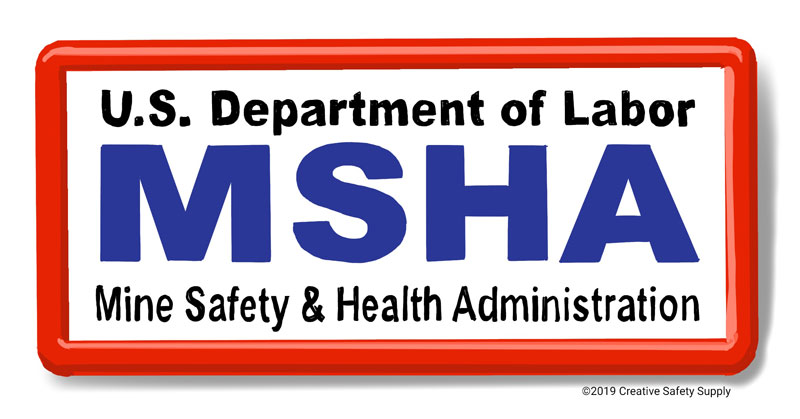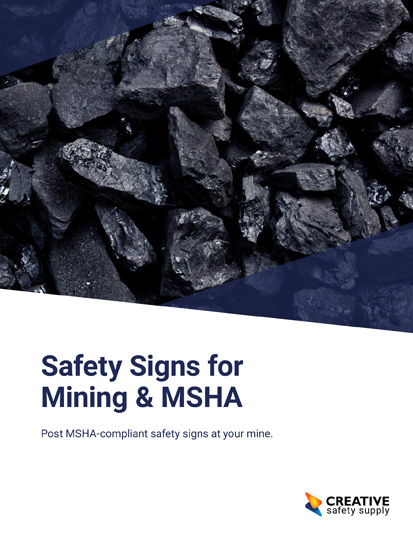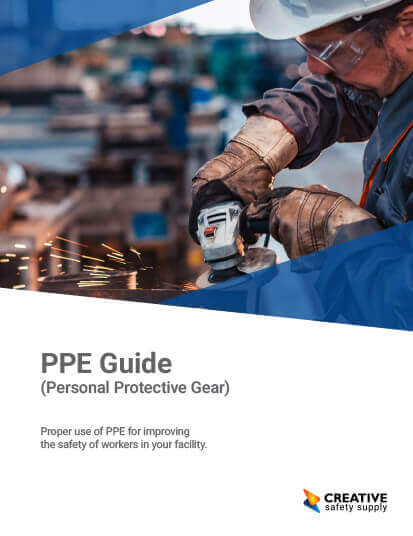
The Mine Safety and Health Administration (MSHA) is a federal agency that regulates and enforces safety and health standards for the mining industry in the United States. MSHA’s mission is to prevent death, illness, and injury from mining and promote safe and healthful workplaces for U.S. miners. In this article, we will explore the core elements of MSHA, their significance within the mining domain, and the historical background of the agency. We will also investigate how applying MSHA’s standards and programs results in a more organized and efficient environment for miners and mine operators. Additionally, we will explore any connections with other related concepts, such as the Occupational Safety and Health Administration (OSHA), emphasizing practical applications and the tangible benefits of combining these approaches for enhanced performance.

What are the core elements of MSHA?
MSHA has four main components: standards, enforcement, education and training, and technical support. Each component plays a vital role in ensuring the safety and health of miners and mine operators. Adherence and respect for these guidelines is what ultimately keeps miners safe and healthy on the job site.
Standards
MSHA develops and issues mandatory safety and health standards for all U.S. mines, covering topics such as ventilation, explosives, equipment, fire protection, electrical systems, noise, dust, and radiation. These standards are based on scientific research, engineering principles, and best practices in the mining industry. MSHA also reviews and approves mine plans, equipment, and materials to ensure compliance with the standards.
Enforcement
MSHA enforces the safety and health standards by conducting regular inspections and investigations at mines, issuing citations and orders for violations, and imposing civil penalties and other sanctions for noncompliance. MSHA also has the authority to close mines or withdraw miners from unsafe or unhealthy conditions. MSHA inspectors are trained and certified professionals who have extensive experience and knowledge in the mining industry.
Education and Training
MSHA provides technical, educational, and other types of assistance to mine operators and miners to help them comply with the safety and health standards and improve their safety and health performance. MSHA offers a variety of programs and resources, such as online courses, workshops, seminars, publications, videos, and grants, to educate and train miners and mine operators on various topics, such as hazard recognition, accident prevention, emergency response, and miners’ rights and responsibilities.
Technical Support
MSHA provides technical support and guidance to the mining industry and other stakeholders on various issues related to safety and health, such as engineering, testing, evaluation, research, and development. MSHA also operates laboratories and testing facilities to conduct experiments, analyses, and evaluations of mining equipment, materials, and systems. MSHA’s technical support helps to identify and solve problems, develop and implement solutions, and promote innovation and excellence in the mining industry.
Why is MSHA important for the mining domain?
MSHA is important for the mining domain because it helps to protect the lives and health of millions of miners and mine operators who work in one of the most hazardous industries in the world. Mining involves various risks and challenges, such as exposure to toxic substances, extreme temperatures, high pressures, heavy machinery, explosives, and confined spaces. These hazards can cause serious injuries, illnesses, and fatalities for miners and mine operators, as well as environmental and economic impacts for the society.
MSHA’s standards, enforcement, education and training, and technical support help to reduce the risks and challenges associated with mining and improve the safety and health conditions for miners and mine operators. MSHA’s efforts have resulted in significant reductions in mining fatalities, injuries, and illnesses over the years. For example, in 1978, the year after MSHA was established, there were 242 coal mine fatalities and 6,055 nonfatal injuries in the U.S. In 2020, there were 29 coal mine fatalities and 1,066 nonfatal injuries in the U.S. This represents an 88% decrease in fatalities and an 82% decrease in injuries over a 42-year period.
MSHA also helps to enhance the productivity and profitability of the mining industry by promoting a culture of safety and health among miners and mine operators. MSHA’s programs and resources help to educate and train miners and mine operators on how to prevent and avoid accidents, injuries, and illnesses, and how to respond and recover from them. MSHA’s technical support helps to improve the performance and reliability of mining equipment, materials, and systems, and to foster innovation and excellence in the mining industry. MSHA’s standards and enforcement help to create a level playing field for the mining industry, ensuring fair and consistent compliance and competition among mine operators.
What is the historical background of MSHA?
MSHA was established in 1977 by the Federal Mine Safety and Health Act of 1977 (Mine Act), which amended the Coal Mine Safety and Health Act of 1969 and the Metal and Nonmetallic Mine Safety Act of 1966. The Mine Act consolidated the safety and health regulations and enforcement for all types of mines under one agency, and expanded the rights and protections for miners and mine operators. The Mine Act also created the independent Federal Mine Safety and Health Review Commission, which adjudicates disputes between MSHA and mine operators over citations, orders, and penalties.
The Mine Act was a response to the growing public concern and demand for improved safety and health conditions in the mining industry, following several major mining disasters and tragedies in the 1960s and 1970s, such as the Farmington coal mine explosion in 1968, which killed 78 miners, and the Sunshine silver mine fire in 1972, which killed 91 miners. The Mine Act was also influenced by the labor movement and the civil rights movement, which advocated for the rights and welfare of workers and minorities in the mining industry.
The Mine Act was the culmination of a long history of legislative and regulatory efforts to improve mine safety and health in the United States, dating back to the late 19th century, when the first state laws and federal commissions were established to address the hazards and problems of mining. Some of the key milestones in this history include:
- The Bureau of Mines, the first federal agency dedicated to mine safety and health, was established in 1910, following the Cherry coal mine disaster in 1909, which killed 259 miners. The Bureau of Mines conducted research, testing, and education on mine safety and health, but had no enforcement authority.
- The Federal Coal Mine Safety Act of 1952, the first federal law to regulate coal mine safety and health, was enacted, following the West Frankfort coal mine explosion in 1951, which killed 119 miners. The Act authorized the Bureau of Mines to conduct annual inspections and investigations at coal mines, and to issue recommendations for improving safety and health conditions. However, the Act had no enforcement power, and the compliance with the recommendations was voluntary.
- The Federal Metal and Nonmetallic Mine Safety Act of 1966, the first federal law to regulate metal and nonmetal mine safety and health, was enacted, following the Aberfan coal mine disaster in 1966, which killed 144 people, mostly children, in Wales. The Act authorized the Secretary of the Interior to develop and issue mandatory safety and health standards for metal and nonmetal mines, and to conduct inspections and investigations at mines, and to issue citations and orders for violations. However, the Act had limited scope and coverage, and the enforcement was weak and inconsistent.
- The Coal Mine Safety and Health Act of 1969, also known as the Coal Act, was enacted, following the Farmington coal mine explosion in 1968, which killed 78 miners. The Coal Act was the most comprehensive and stringent federal law to regulate coal mine safety and health at the time. The Coal Act established mandatory safety and health standards for coal mines, and created the Mining Enforcement and Safety Administration (MESA), a new agency within the Department of the Interior, to enforce the standards. The Coal Act also granted miners the right to report hazards, request inspections, and refuse to work in unsafe or unhealthy conditions, and protected miners from discrimination and retaliation for exercising their rights.
How does applying MSHA’s standards and programs result in a more organized and efficient environment for miners and mine operators?
Applying MSHA’s standards and programs results in a more organized and efficient environment for miners and mine operators, because it helps to create a safer and healthier workplace, where accidents, injuries, and illnesses are prevented or minimized, and where workers and managers are educated and trained on how to perform their tasks and duties effectively and responsibly. Some of the benefits of applying MSHA’s standards and programs include:
- Reducing the human and social costs of mining, such as fatalities, injuries, illnesses, disabilities, and psychological trauma, which affect the well-being and quality of life of miners, their families, and their communities.
- Reducing the economic and environmental costs of mining, such as lost productivity, medical expenses, workers’ compensation, litigation, fines, penalties, cleanup, and remediation, which affect the profitability and sustainability of the mining industry and the society.
- Improving the performance and reliability of mining equipment, materials, and systems, by ensuring that they meet the safety and health standards, and by providing technical support and guidance on how to improve their design, operation, and maintenance.
- Fostering a culture of safety and health among miners and mine operators, by providing education and training on how to recognize and avoid hazards, how to prevent and mitigate accidents, and how to respond and recover from emergencies.
- Creating a level playing field for the mining industry, by ensuring fair and consistent compliance and competition among mine operators, and by providing incentives and recognition for excellence and innovation in safety and health performance.
How does MSHA connect with other related concepts, such as OSHA?
MSHA connects with other related concepts, such as the Occupational Safety and Health Administration (OSHA), which is another federal agency that regulates and enforces safety and health standards for most workplaces in the United States, except for mines, which are under MSHA’s jurisdiction. Both MSHA and OSHA share the same goal of protecting the safety and health of workers and employers, and both agencies have similar components and functions, such as standards, enforcement, education and training, and technical support. However, there are also some differences and distinctions between MSHA and OSHA, such as:
- MSHA covers all types of mines, including coal, metal, nonmetal, stone, sand, and gravel mines, while OSHA covers all other types of workplaces, such as construction, manufacturing, agriculture, and service industries.
- MSHA’s standards are more specific and tailored to the mining industry, while OSHA’s standards are more general and applicable to various industries.
- MSHA conducts more frequent and comprehensive inspections and investigations at mines, usually four times a year for underground mines and two times a year for surface mines, while OSHA conducts inspections and investigations at workplaces based on complaints, referrals, accidents, or targeted programs.
- MSHA has more authority and discretion to issue citations, orders, and penalties for violations, and to close mines or withdraw miners from unsafe or unhealthy conditions, while OSHA has more limitations and procedures to follow before taking such actions.
- MSHA has more involvement and interaction with miners and mine operators, and more access and influence on mine plans, equipment, and materials, while OSHA has less involvement and interaction with workers and employers, and less access and influence on workplace plans, equipment, and materials.
Despite the differences and distinctions between MSHA and OSHA, both agencies also collaborate and cooperate with each other on various issues and initiatives related to safety and health, such as:
- Sharing information and data on hazards, accidents, injuries, illnesses, and best practices in the mining and non-mining industries.
- Developing and implementing joint standards and programs on topics that affect both mining and non-mining workplaces, such as respirable crystalline silica, diesel particulate matter, and ergonomics.
- Providing cross-training and cross-certification for MSHA and OSHA inspectors and personnel, to enhance their skills and knowledge on safety and health issues in both mining and non-mining workplaces.
- Coordinating and cooperating on enforcement and compliance activities, such as joint inspections and investigations, referrals and consultations, and joint actions and sanctions, to ensure consistent and effective enforcement and compliance of safety and health standards in both mining and non-mining workplaces.
MSHA is a federal agency that regulates and enforces safety and health standards for the mining industry in the United States. MSHA’s mission is to prevent death, illness, and injury from mining and promote safe and healthful workplaces for U.S. miners. MSHA has four main components: standards, enforcement, education and training, and technical support, which help to reduce the risks and challenges associated with mining and improve the safety and health conditions for miners and mine operators. MSHA also connects with other related concepts, such as OSHA, which is another federal agency that regulates and enforces safety and health standards for most workplaces in the United States, except for mines. Both MSHA and OSHA share the same goal of protecting the safety and health of workers and employers, and both agencies collaborate and cooperate with each other on various issues and initiatives related to safety and health.
MSHA is important for the mining domain, because it helps to protect the lives and health of millions of miners and mine operators who work in one of the most hazardous industries in the world. MSHA also helps to enhance the productivity and profitability of the mining industry by promoting a culture of safety and health among miners and mine operators. MSHA is the result of a long history of legislative and regulatory efforts to improve mine safety and health in the United States, dating back to the late 19th century, when the first state laws and federal commissions were established to address the hazards and problems of mining.
This article has provided a comprehensive overview of what MSHA is, what are its core elements, why it is important for the mining domain, what is its historical background, and how it connects with other related concepts, such as OSHA. We hope that this article has been informative, captivating, and SEO-optimized, and that it has incorporated appropriate keywords to improve search engine visibility. Thank you for reading this article, and please feel free to contact us if you have any questions or comments.
Additional MSHA facts:
- MSHA stands for the Mine Safety and Health Administration, which is a federal agency responsible for enforcing safety and health regulations in mines in the United States. It operates under the Department of Labor and aims to ensure the safety of mine workers and reduce the number of accidents, injuries, and fatalities in the mining industry. Source: https://en.wikipedia.org/wiki/Mine_Safety_and_Health_Administration
- MSHA was established in 1977 by the Federal Mine Safety and Health Act of 1977 (Mine Act), which amended the Coal Mine Safety and Health Act of 1969 and the Metal and Nonmetallic Mine Safety Act of 1966. The Mine Act gave MSHA the authority to inspect all mines, issue citations and orders, impose civil penalties, and conduct hearings and investigations. Source: https://www.msha.gov/about
- MSHA has four major program areas: Coal Mine Safety and Health, Metal and Nonmetal Mine Safety and Health, Educational Policy and Development, and Technical Support. Each program area is headed by a deputy assistant secretary who reports to the assistant secretary for mine safety and health. Source: https://www.ncesc.com/what-is-an-msha-certification/
- MSHA offers various training and education programs for mine operators, miners, and other stakeholders. These include the National Mine Health and Safety Academy, the State Grants Program, the Brookwood-Sago Mine Safety Grants Program, and the Holmes Mine Rescue Association. Source: https://www.usa.gov/agencies/mine-safety-and-health-administration
- MSHA also maintains data and statistics on mine accidents, injuries, illnesses, violations, employment, production, and fatalities. These data are available on the MSHA website and can be accessed by mine type, state, year, and other criteria. Source: https://www.dol.gov/general/aboutdol/history/carter-msha
Similar Questions
- What does MSHA stand for?
- How are mine inspections handled?
- What does mining safety encompass?
- What are risks associated with mining?
- What PPE is commonly used for mining?
- What are some of the Best Practices for Mining Safety?
- What are labels and signs I can use in a mine?


